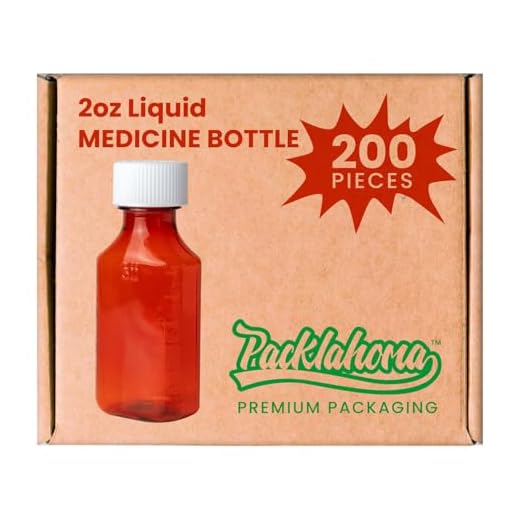



Always carry prescriptions and over-the-counter drugs in carry-on bags. This practice ensures easy access during the flight and minimizes the risk of loss if checked baggage is delayed.
Keep all medications in their original packaging. Clear labeling is crucial as it helps airport security identify the contents quickly and avoids unnecessary delays. A copy of the prescription can also be handy, particularly for controlled substances.
Adhere to the liquid regulations: medications in liquid form must not exceed 3.4 ounces (100 ml) per container. Place them in a quart-sized clear plastic bag for screening. If larger quantities are necessary, separate them for inspection and inform security personnel at the checkpoint.
Consider time zone changes when traveling long distances. Carry an extra dose in case of delays. Stay informed about regulations in the destination country, as some medications may be restricted or require special documentation for import.
Prioritize the health needs while traveling. Planning ahead will ensure a smooth journey with necessary medications readily available at all times.
Understanding Airline Regulations for Carrying Medications
Regulations require that all pharmaceuticals be stored securely during air travel. It is advisable to keep items in original containers with clear labeling, facilitating identification by security personnel. Documentation such as prescriptions or a doctor’s note can aid in expediting inspections and clarifying the need for specific treatments.
Be aware of quantity limits for liquid forms; typically, a maximum volume per container is set, alongside an overall limit for total liquid carried. Utilizing travel-sized packages may be beneficial for compliance. Solid forms generally face fewer restrictions, allowing for easier transport.
International flights may impose varying constraints depending on both departure and destination countries. Thoroughly research specific laws and guidelines before traveling, as discrepancies may lead to inconveniences or complications at customs.
In case of a connecting flight involving different airlines, verify each carrier’s regulations. It is wise to have a backup plan for medication in case of delays or lost baggage. Carrying extra supplies could mitigate potential issues while away from home.
Consider discussing travel plans with a healthcare professional in advance. This can provide insights on managing dosage schedules and potential needs for refrigeration or special handling. The more prepared one is, the smoother the travel experience regarding health requirements.
Documents and Labels You Need When Traveling with Medication
Carry the original prescription specifically labeled with your name, the medication name, and dosage when traveling. This documentation is essential for security checks and verification by medical personnel if issues arise.
Recommended Documentation
- Original prescription from your healthcare provider.
- List of all medications, including generic names, dosages, and instructions.
- Doctor’s note, especially for controlled substances or injections.
- Insurance card and relevant policies that cover your medications.
Labeling and Packaging Tips
- Ensure all medication is in original containers with clearly visible labeling.
- Separate personal use items from your medical supplies for clarity.
- If considering additional storage solutions, look into the best sbr backpack for organization.
In case medications are lost or damaged, keeping copies of your prescriptions and documents in a different location can be beneficial. This will streamline the process of obtaining replacements during your trip.
Additionally, if traveling with a service animal or specialized care needs, documentation for animals may also be necessary. Understanding local regulations in advance helps avoid challenges upon arrival. For those with pets, knowing how to find a break in an invisible dog fence can aid in managing their safety while away.
Best Practices for Packing Medication in Hand Luggage
Secure all pharmaceutical supplies in their original containers, clearly labeled with the prescription details. This simplifies identification during security checks.
Include a sufficient quantity to cover the duration of travel, plus additional doses for unforeseen delays. Carrying extras provides peace of mind.
Store these items in a transparent, resealable pouch for ease of access. This allows for quick presentation at security checkpoints and helps streamline the screening process.
If refrigeration is necessary, explore portable cooling options or consult with the airline for guidance on maintaining temperature-sensitive substances.
Prepare a list of all items with corresponding dosages. This can assist healthcare providers in case of emergencies and provide clarity during inspections.
Consider acquiring a doctor’s note or a letter outlining the need for specific products. Such documentation may alleviate concerns from security personnel.
Be aware of liquid limits if any formulations are in liquid form, typically not exceeding 100 milliliters per container. Verify specific airline policies regarding this aspect.
Inquire about personal medical resources, including any travel-related health issues. Sharing these with staff can facilitate smoother procedures during travel.
Check for any travel regulations regarding specific substances in destinations. Some medications may be restricted or require special approvals.
Maintain a list of local pharmacies at the arrival destination. This can be beneficial should restocking be necessary.
What to Do If Security Questions Your Medication
In case security personnel express concerns regarding pharmaceuticals, maintain composure and follow these steps. Politely ask for clarification on their specific concerns related to the substances in question.
Present Documentation
Offer any relevant prescriptions or doctor’s notes that state the necessity for the items. Ensure that these documents are easily accessible, as this can expedite the process and alleviate security worries.
Provide Clear Labeling
Display clearly labeled containers where possible. Original packaging with labels will help verify that products are legitimate and intended for personal use. If items are in unmarked containers, consider reorganizing them before travel.
If further information is requested, be ready to explain how frequently the substances are taken and their purpose. This transparency not only establishes trust but can effectively address any misunderstandings.
Be prepared for a potential secondary screening. This may include additional questioning or a visual inspection of the products. Stay cooperative and comply with the requests made by security staff.
If issues persist, request to speak with a supervisor. A higher authority may be more familiar with protocols regarding pharmaceuticals and can assist in resolving the matter efficiently.







